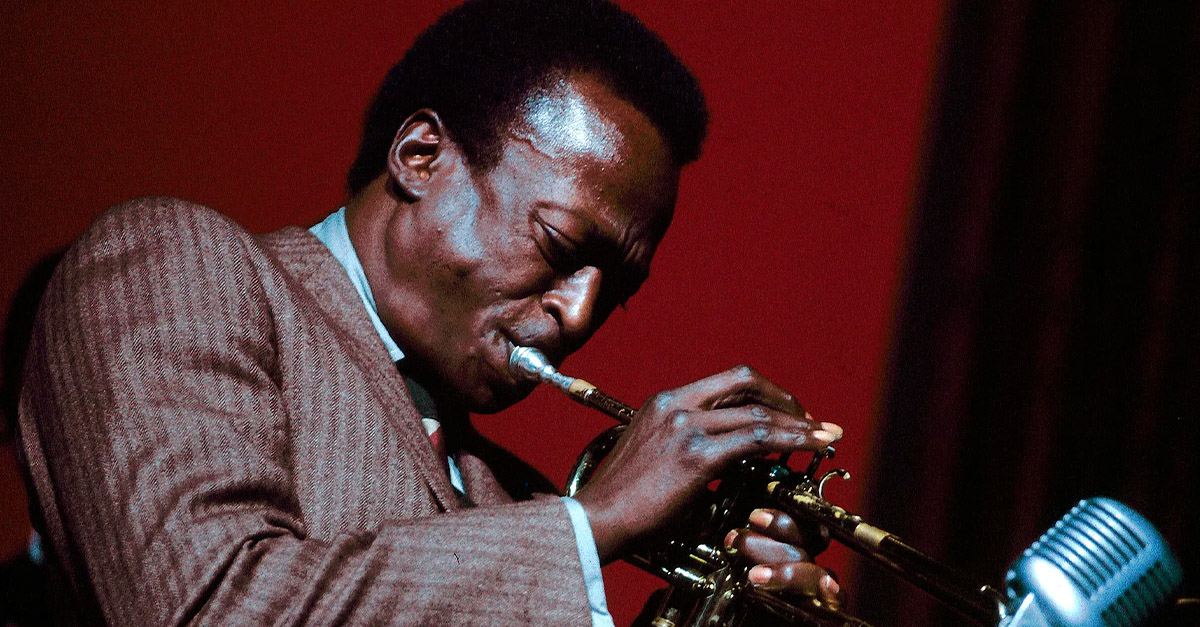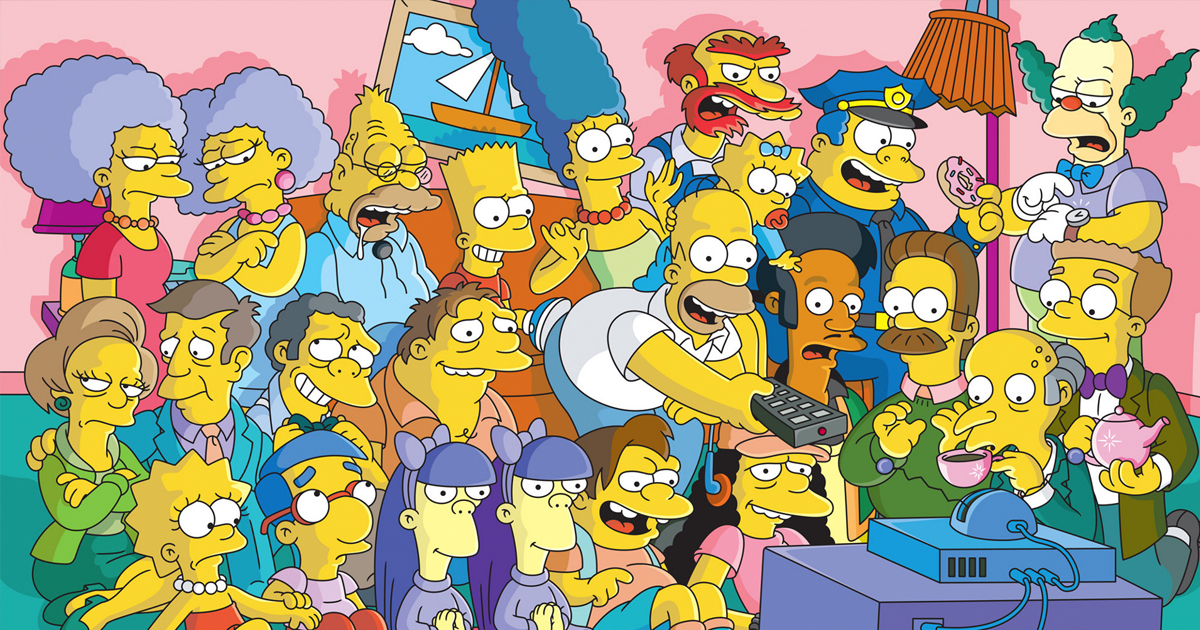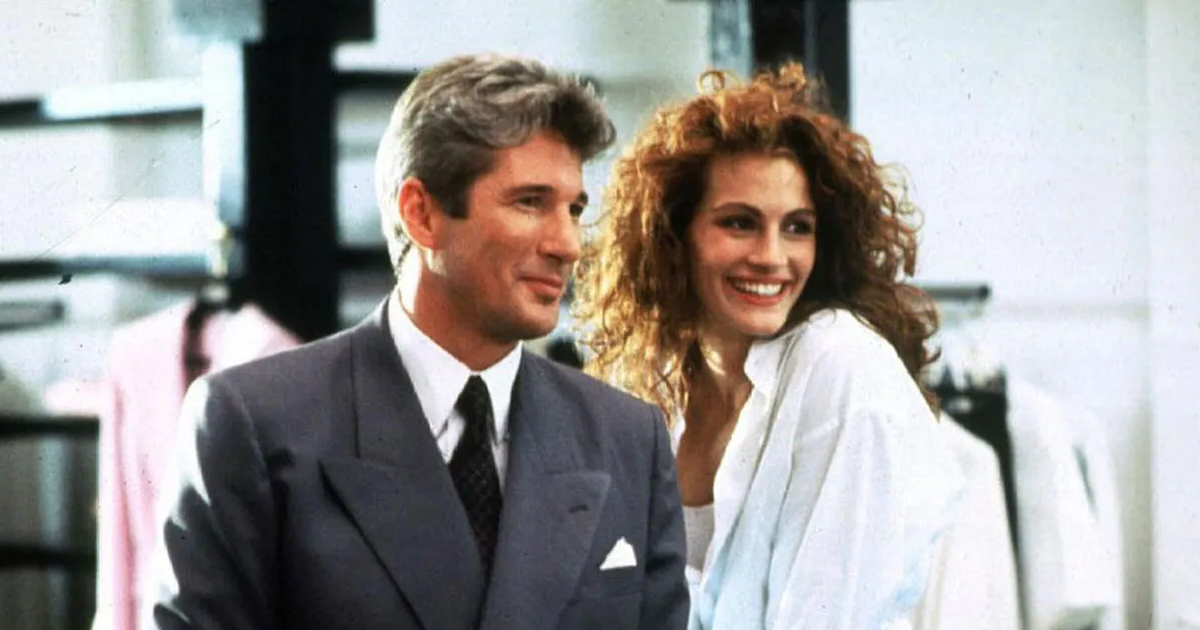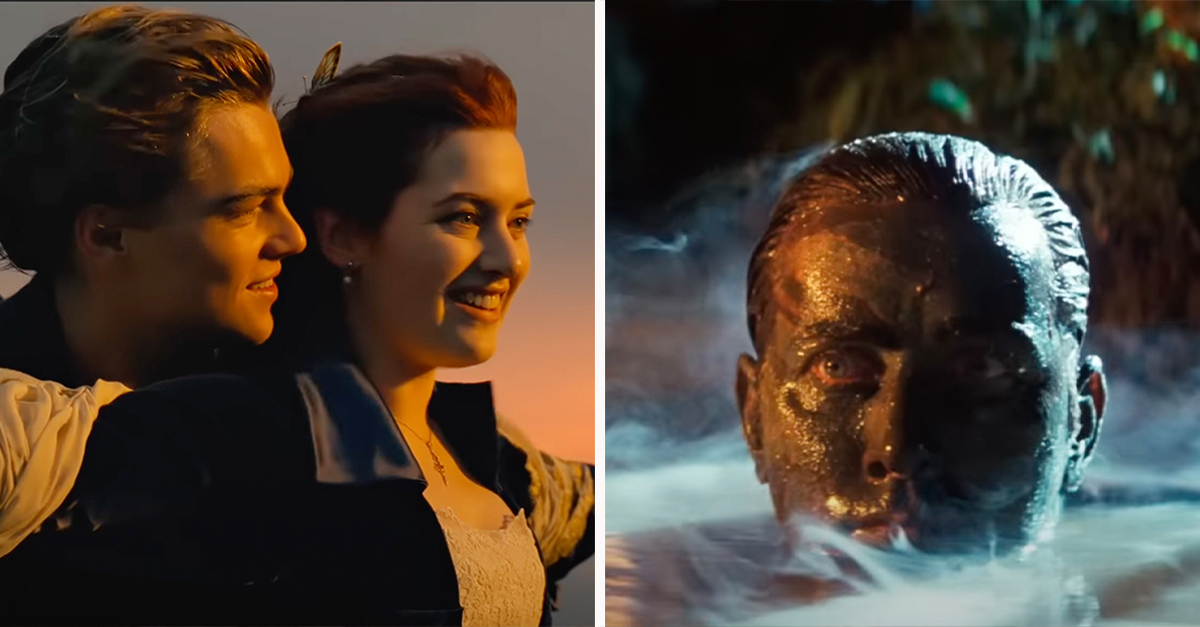He Was A Musial Genius With A Dark Side
No one can say that Miles Davis lacked talent, or that he didn't have an enormous effect on the modern jazz movement. Most of Davis’ issues were with his personal life. He said he loved women, but his poor treatment of them was infamous. Second in line after women was his love of mind-altering substances. But at the root of all of his problems was his hot temper, and it led to one of the most ironic passings of all time.

1. He Had An Idyllic Childhood
Miles Dewey Davis III was born on May 26, 1926, in Alton, Illinois. He and his older sister and younger brother had what many Americans would call a blissful childhood. The family owned a 200-acre estate in nearby Pine Bluff, and there the kids could ride horses, fish and hunt. But Davis needed more than just the fresh air of the countryside.
 Tom Palumbo from New York City, USA, Wikimedia Commons
Tom Palumbo from New York City, USA, Wikimedia Commons
2. He Needed Something
Davis’ mother brought music into the family, as she played the violin and taught music. Dad, being a dentist, was more of the breadwinner. By the time the great depression hit, the family had moved to East St Louis, and Dad had to focus all his attention on his work. Lucky for Davis, a friend of his father's saw that he needed something.
 Michael Ochs Archives, Getty Images
Michael Ochs Archives, Getty Images
3. He Found His Mentor
Somehow, John Eubanks knew Davis needed something. For this reason, he bought Davis a trumpet. Around the same time, another connection from this father—this time one of his patients—became Davis’ trumpet teacher. Davis later said that Elwood Buchanan became the biggest influence in his life. Davis was already heading for a career in music.
But he had some hurdles to get over first.
 William P. Gottlieb, Wikimedia Commons
William P. Gottlieb, Wikimedia Commons
4. He Faced Discrimination
While he was a student at East St Louis Lincoln High School, Davis joined the marching band. It was here that he experienced discrimination because he was Black. This was a struggle for Davis, but he later said that it somehow made him a better musician. All he had to do was finish high school, and his career could begin.
Fate had other plans for Davis.
 Michael Ochs Archives, Getty Images
Michael Ochs Archives, Getty Images
5. He Started A Family
The summer after his graduation from high school, Davis’ girlfriend, Irene Birth, had a baby. But this didn’t slow Davis down. That same summer he replaced the trumpeter in a band that included big names like Dizzy Gillespie and Charlie Parker. It was a dream come true for Davis. Davis played with this band for two weeks, and it moved him to make a big decision.
6. They Couldn’t Agree
Davis was sure that the only place for him was New York City. Mom put up resistance and insisted he study piano or the violin at Fisk University in Nashville. Dad saw that there was disagreement in the house and offered an alternative. Why not study at Julliard in New York City?
This was a compromise that Davis could get on board with, but he had his own secret agenda.
 Reijo Koskinen / Lehtikuva, Wikimedia Commons
Reijo Koskinen / Lehtikuva, Wikimedia Commons
7. He Was Absent
Yes, Davis did agree to enroll at New York’s prestigious Julliard School of Music, but he never agreed to attend all his classes. Davis was soon skipping class and scouring New York for Charlie Parker. Once he found him, Davis joined Parker at various jam sessions in Harlem.
Something was about to cramp Davis’ style.
 William P. Gottlieb, Wikimedia Commons
William P. Gottlieb, Wikimedia Commons
8. They Made A Home
Remember, Davis was actually a father, and his girlfriend and daughter Cheryl arrived in New York to join him. The small family was trying to make ends meet living off an allowance from Davis’ dad. To help pay the bills, Charlie Parker became their roommate. It was a musical household, but not everything was on key.
 Michael Ochs Archives, Getty Images
Michael Ochs Archives, Getty Images
9. He Had Flaws
Other musicians may have noticed something peculiar about Davis’ skill. He wasn’t always in tune, and he was tentative when he played. While these certainly weren’t good things, they soon became assets. Davis wasn’t playing like other trumpet musicians, and this made him stand out.
This uniqueness would take Davis to bigger and better things.
 Michael Ochs Archives, Getty Images
Michael Ochs Archives, Getty Images
10. He Had A One Track Mind
At this time, Davis was so focused on music that he forgot the other important things in his life. Two of them were his girlfriend and daughter. Making matters worse, Davis began boozing and snorting his earnings up his nose. Somehow, despite his substance use, Davis still had time to change the course of jazz forever.
 Michael Ochs Archives, Getty Images
Michael Ochs Archives, Getty Images
11. He Changed History
In 1948, Davis gathered his favorite musicians—including Gerry Mulligan and Lee Konitz—and formed a nine-piece band. The Miles Davis Nonet was doing something different. They combined bebop with a sound that was more orchestral than other jazz musicians. Some say, the music these nine players were making altered the course of American jazz music.
Next, it was time to take his sound abroad.
 Michael Ochs Archives, Getty Images
Michael Ochs Archives, Getty Images
12. He Saw A Better Place
When he wasn’t playing with the Miles Davis Nonet, Davis performed with other musicians. In May 1949, this took him to the Paris International Jazz Festival. Davis loved Paris and for a very good reason. He felt that people of color got better treatment there than in the US.
There was something else Paris was good at: sparking romance.
 Michael Ochs Archives, Getty Images
Michael Ochs Archives, Getty Images
13. He Met A Soulmate
While performing in Paris, Davis met Parisian singer and actor Juliette Greco. The two began an affair, but it wasn’t meant to last. They realized that their careers were on opposite sides of the Atlantic, and Davis worried that his race would have a negative impact on her career. They agreed to be friends and lovers and this continued for the rest of Davis’ days.
But Davis’ return to America would not be a triumphant one.
 Boris Carmi, Wikimedia Commons
Boris Carmi, Wikimedia Commons
14. He Met Tough Times
Something about Paris had left Davis depressed. He wasn’t finding much work, and money was tight. He was even at risk of losing his car. Of course, it didn’t help that he now had a very expensive drug addiction to take care of. In 1950, Davis’ girlfriend was pregnant again, which would make his financial situation even worse.
He had to make a move.
15. He Got Picked Up
When Davis got an offer to tour with famed chanteuse Billie Holiday, he knew he had to do it. He packed up his wife and kids and left them with his friend, jazz singer Betty Carter. Once the tour was underway, Davis hit a snag. Authorities in LA picked him up for drug possession. This would be another reason for other musicians to avoid working with Davis.
Davis was about to go down a dangerous spiral.
 Michael Ochs Archives, Getty Images
Michael Ochs Archives, Getty Images
16. He Was A Hustler
A one-year contract with Prestige Records helped Davis, but his drug use was off the charts. He still needed more money. Friends would often help him out financially, but this wasn’t enough. Sadly, Davis started a hard-hearted job: living off of the work of prostitutes.
Somehow, Davis was keeping all his problems under the radar, but that was about to change.
 Shepard Sherbell, Getty Images
Shepard Sherbell, Getty Images
17. He Got Outed
When Davis did an interview with Cab Calloway for DownBeat magazine, he didn’t know it would change his life forever. In the article, Calloway couldn’t help but mention Davis’ struggle with drug addiction and, according to Davis, this brought him “all pain and suffering”.
Luckily, it provided Davis with the wake-up call he needed.
 Shepard Sherbell, Getty Images
Shepard Sherbell, Getty Images
18. He Went Home For Help
In 1953, Davis went back to his family. He stayed with his dad and focused on getting past his addiction. After a few setbacks, Davis returned to New York a new man. He said he felt stronger both in his mind and in his body. He even joined a gym. It was time for a new chapter in his life.
But not all the changes were for the better.
19. He Changed
Davis found new success, but there was something different about him. He had developed a distant personality, especially with the press. He said he’d learned it from boxer Sugar Ray Robinson. People also noticed that Davis was easily angered. Well, his hot temper was going to cost him a lot.
 Michael Ochs Archives, Getty Images
Michael Ochs Archives, Getty Images
20. He Didn’t Listen To Doctors
In 1955, Davis discovered he had polyps and the doctors needed to remove them to save his voice. After the operation, the doctors told Davis to stay quiet. This angered Davis, and he got into an argument and did permanent damage to his vocal cords. Clearly, Davis needed a break.
Thankfully, one was just around the corner.
21. He Wowed Them
The same year as his operation, Davis got the opportunity to play at the prestigious Newport Jazz Festival. Davis’ riveting performance wowed audiences and critics alike, and it brought Davis a level of fame he’d never reached before. It also got him a contract with Columbia Records.
Even with things going so well in his life, Davis was about to come face-to-face with his old demons.
22. He Lost His Cool
In 1956, Davis was playing with the Miles Davis Quintet, which included Philly Joe Jones and John Coltrane. When they went on tour, Davis couldn’t deal with his friends’ drug use. Now that Davis was more or less clean, he lost his patience with his drug-addled cohorts. Davis promptly fired and replaced the two offending musicians.
His career was on an upswing, and so was his personal life.
23. He Got A Double Rejection
Back in 1953, Davis had met ballerina Frances Taylor. Davis wanted Taylor and actually asked Taylor’s father if he could marry his daughter. Taylor’s father took one look at Davis and gave him a hard “no”. Not put off by her dad, Davis asked Taylor for her hand. Davis received yet another “no”.
It was a double whammy, but Davis would get a second chance.
24. They Reunited
Fast forward to 1957 and Davis bumps into Taylor, who had since been married and divorced. She’d also recently pivoted her career from ballet to musical theater and was appearing in a Broadway production of West Side Story. When she started dating Davis, she made the surprising announcement that she was leaving the show.
Her reason was that she was now going to focus only on singing and dancing. But the worrying truth came out later.
 Photo by Fred Fehl, New York., Wikimedia Commons
Photo by Fred Fehl, New York., Wikimedia Commons
25. He Wanted Her Close
When Davis started dating Taylor, he didn’t want her to continue in her Broadway show. Taylor later revealed the startling reason why. Davis thought “a woman should be with her man” and not be doing theater. When the two decided to tie the knot, Davis’ demands became even more extreme.
26. He Controlled Her
While married to Davis, Taylor missed out on some very lucrative gigs. He made her refuse to appear in the film version of West Side Story and in the musical Golden Boy with Sammy Davis Jr. It looked like Davis was sabotaging his wife’s career.
But on the outside, they seemed like the ideal couple.
27. He Lived To The Extreme
Davis and Taylor had quite the lifestyle. They lived in a townhouse on West 77th Street in Manhattan. The building, which had once been a Russian Orthodox Church, was now a five-story pleasure palace. Davis didn’t care about the building’s history, he decorated it with leopard skin rugs and abstract paintings.
Behind these glamorous walls, their life was far from perfect.
28. He Behaved Erratically
Soon after getting married, Davis started hitting Talyor. He blamed it on his jealousy and unpredictability. He’d also started boozing again and had resumed his drug use, which fueled the violent episodes with Taylor. He said that at the time he was hallucinating. The story goes that Davis once stalked around the house with a knife in his hand, looking for an “imaginary person”.
It was time for a new woman who didn’t know about his unusual behavior.
29. He Met His Match
In 1966, Davis and Taylor separated, and Davis met singer, songwriter, and model Betty Gray Mabry. Two years later, the two officially started dating. If Davis had a habit of controlling the women in his life, he’d certainly met his match with Mabry. She was ahead of the times with her suggestive lyrics and performance style and she had a thing or two to teach Davis.
30. He Got Hip
Davis certainly was a king when it came to jazz, but he lacked knowledge about other forms of popular culture. Mabry exposed Davis to things like psychedelic rock and some of the more “out there” fashion of the time. In exchange, Davis made a tribute song for her—called “Mademoiselle Mabry”—on his Filles de Kilimanjaro album and also put her on the cover.
But this relationship was about to go over to the dark side.
31. She Changed Her Name
Even though Davis was 18 years her senior, they walked down the aisle together in September 1968. This made Betty Mabry’s name a close match to Hollywood icon Bette Davis. But Mabry was doing alright on her own, and she introduced Davis to funk aficionado Sly Stone and iconic guitarist Jimi Hendrix.
This meeting with Hendrix would not go well.
 Hannu Lindroos / Lehtikuva, Wikimedia Commons
Hannu Lindroos / Lehtikuva, Wikimedia Commons
32. He Was Suspicious
While Hendrix did influence Davis’ later musical work, he also influenced his marriage. Because Davis thought Mabry was young and wild, he suspected she was having an affair with Hendrix. This brought their short marriage to an abrupt end, but Mabry wanted to set the record straight. She said there was no affair, and that they broke up because of Davis’ “violent temper”.
It didn’t take long for Davis to find another woman and get into even worse trouble.
33. He Got Shot At
Davis was once again a free man, and he started dating Marguerite Eskridge. After performing at the Blue Coronet club in Brooklyn, Davis and Eskridge got into Davis’ Ferrari to go home. Davis noticed that someone was following them in a cab. Suddenly, shots rang out and hit the car multiple times. Luckily, the Ferrari had heavy doors and only one shell got through.
It missed Eskridge but hit Davis.
 Michael Ochs Archives, Getty Images
Michael Ochs Archives, Getty Images
34. He Raced Himself To The Hospital
The shell that got through the heavy doors of the Ferrari penetrated Davis’ leather jacket and entered his hip. Davis drove himself to the hospital, but he and his date were in for a shock. At the emergency ward, officers read both Davis and Eskridge their rights.
Wait a minute. Weren't they the victims here?
 Michael Ochs Archives, Getty Images
Michael Ochs Archives, Getty Images
35. He Was Innocent
Officers at the hospital suspected that Davis had cannabis in his car. When they pulled out some bags filled with what looked like dried plants, they felt they had hit the jackpot. As it turned out, the bags contained herbal tea, and they had to drop the charges against Davis. Authorities could now focus on who had been shooting at Davis in the first place.
 Michael Ochs Archives, Getty Images
Michael Ochs Archives, Getty Images
36. He Was A Target
As it turned out, this was no random shooting. Clubs in Brooklyn at the time had either Black promoters or white ones. The Black promoters were angry that the white ones were getting more business, so they tended to try to scare away the musicians who booked gigs with white promoters.
Davis had narrowly escaped a lethal situation, and he had a great way to celebrate.
37. He Exchanged Her For A New One
Davis and Eskridge had had a near miss that night, and they celebrated by having a child. Sadly, the birth of their son Erin couldn’t help sustain his relationship with Eskridge, and it ended. The thing was, there was someone else that seemed to always be in the back of Davis’ mind. This was Emmy award-winning actor Cicely Tyson.
It was time for their relationships to take off.
 Michael Ochs Archives, Getty Images
Michael Ochs Archives, Getty Images
38. He Rekindled An Old Flame
Davis had met Tyson back in the 1960s, and now they both seemed ready to commit. Tyson had her work cut out for her. Davis was in desperate need of help with drug dependency. Tyson helped him get over it, but her sad reward was Davis’ violent temper. Their short marriage ended in 1988.
It was becoming increasingly clear that Davis’ only true love was his music.
 Michael Ochs Archives, Getty Images
Michael Ochs Archives, Getty Images
39. He Wouldn't Go Backward
As Davis’ music progressed, people always asked him to play in his old style. Davis always refused. He said that going back to his old style of music was like reheating turkey dinner. It just wasn’t that appetizing. Jazz musician and aficionado Wynton Marsalis said that what Davis was doing now was not even jazz.
Well, Davis was ready to try a completely different art form.
40. They Had An Instant Connection
In 1984, Davis was at a low point in his life. He’d had hip surgery and was walking around on crutches. One day, he started talking to one of his neighbors, sculptor Jo Gelbard. The two had an immediate connection, but Davis was still married to Tyson and Gelbard was also married. Instead of starting a romance, they began painting together.
 Jazz legend's artwork goes on show, AP Archive
Jazz legend's artwork goes on show, AP Archive
41. He Was A Homebody
Slowly, Gelbard started doing things for Davis that traditionally his wife would do. She chose his clothes, decorated his apartment, and even coordinated his finances. Eventually, they became a couple. Gelbard said that at this time Davis rarely wanted to go out. They just enjoyed cooking and painting together.
But then the dark side of Davis came out once again.
 Jazz legend's artwork goes on show, AP Archive
Jazz legend's artwork goes on show, AP Archive
42. He Knew It Was The End
Gelbard says that Davis did eventually become violent towards her. Gelbard could handle the violence—which she said was due to his medication—because by now he was a weak old man. He tried to maintain his image as a healthy macho guy, but the truth was that his life was coming to a close, and he knew it.
But he refused to slow down.
43. He Couldn’t Quit
Davis’ last year was a hard one. He just wanted to keep on performing and painting, but his body was making that difficult. On August 25, 1991, he played at the Hollywood Bowl. After the concert, he felt sick. When he picked up a brush and began to paint, Gelbard was in for a shock.
44. He Saw The End
On August 26, the day after his final concert, Davis painted something that could only be a vision of his demise. In the painting, there were “dark ghostly figures dripping in blood”. Gelbard must have felt an eerie tingling as she looked at the painting. A few days later, she took Davis to the hospital.
There, he got some terrible news.
45. It Was His Anger That Got Him
Once Gelbard got Davis to the hospital, the doctors told them they wanted to implant a tracheal tube due to Davis’ bronchial pneumonia. Davis was mad at the doctors for their suggestion, and he let them have it. Sadly, his body couldn’t take this final outburst, and Davis had a stroke and went into a coma.
46. They Let Him Go
Davis spent a number of days on life support and eventually, they decided to unplug the machine. On September 28, 1991, Davis, in Gelbard’s loving arms, passed. The causes were respiratory failure, pneumonia, and a stroke. The world was ready to mourn this iconic figure of jazz.
But not everyone was mourning.
47. She Wasn’t A Fan
Writer Pearl Cleage was one woman who probably wasn’t mourning the loss of Davis. She’d even written a book called Mad at Miles: A Black Woman’s Guide to Truth. She was so angry at Davis that she said “we ought to break his albums, burn his tapes and scratch his CDs”. The sad fact was that Davis really loved women.
He just had a very strange way of showing it.
48. He Loved Women
Over his lifetime, Davis had three wives. Ironically, none of his four children would come from any of his wives. Some have described his number of affairs as countless. He himself said, “I never needed any help, or ever had any trouble, finding women”. He just simply didn’t have a faithful bone in his body.
But he wasn’t just hard on the women in his life.
49. He Used His Fists
Back in the 1950s, Davis had taken up boxing. Sadly, he didn’t confine this sport only to the ring. Tragically, Davis hit some of his girlfriends and wives but also fought with club owners, waiters, and bartenders. He even punched saxophonist John Coltrane because of his substance use. Davis was certainly a difficult personality in the world of music and popular culture.
One thing is clear: he changed jazz forever.
 Michael Ochs Archives, Getty Images
Michael Ochs Archives, Getty Images
50. He Was A Picasso
Davis’ legacy is so profound that some call him the “Picasso of Jazz”. Most commentators agree that looking at Davis’ career is like looking at all of jazz from the mid-1940s to as far as the early 1990s. He left his mark on each of these decades but it wasn’t just in jazz. Rolling Stone Mick Jagger called him "inarguably one of the most influential and important musicians of the 20th Century".
You May Also Like:
The Tormented Life Of Louis Armstrong
Billie Holiday’s Story Is Not For The Faint Of Heart































